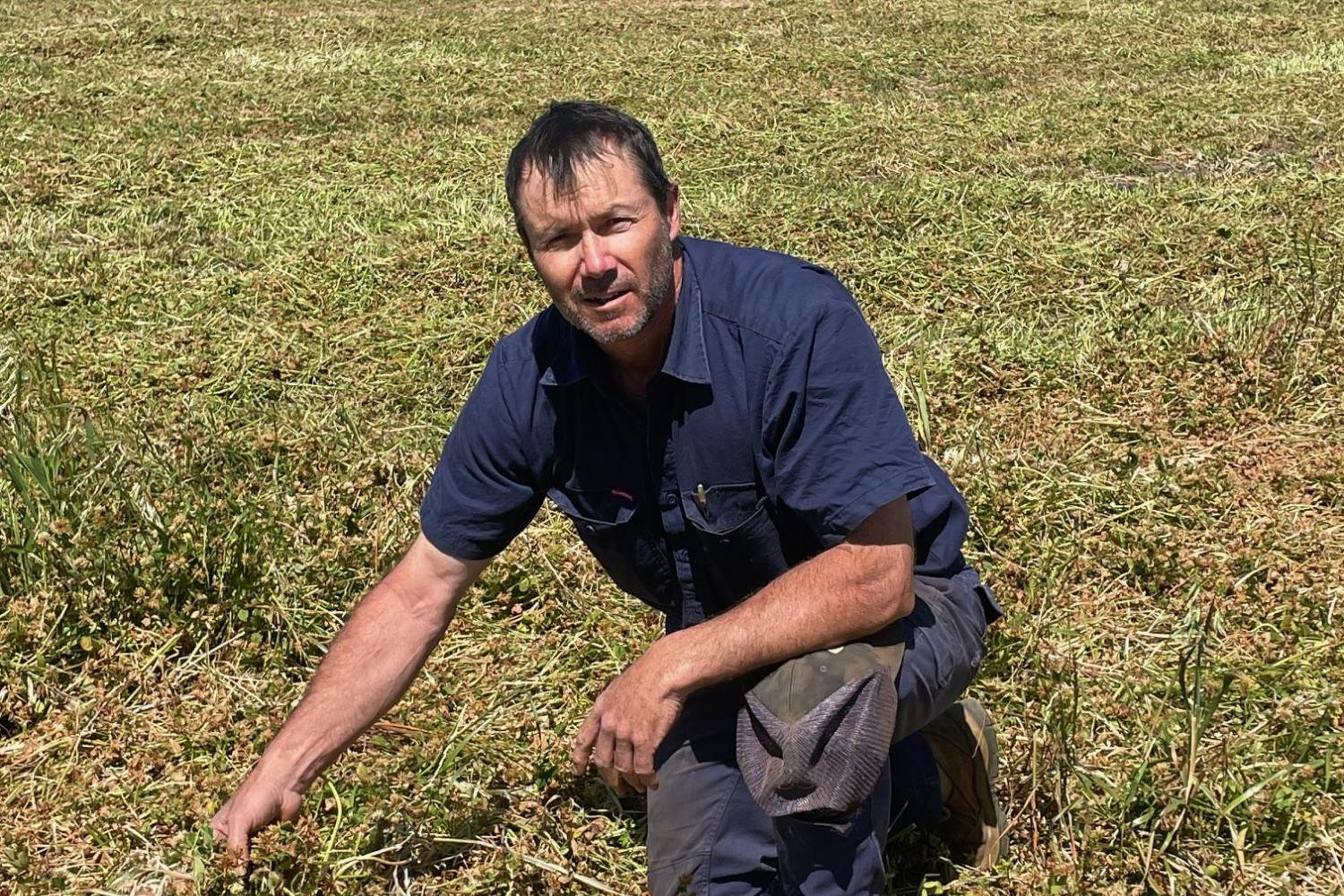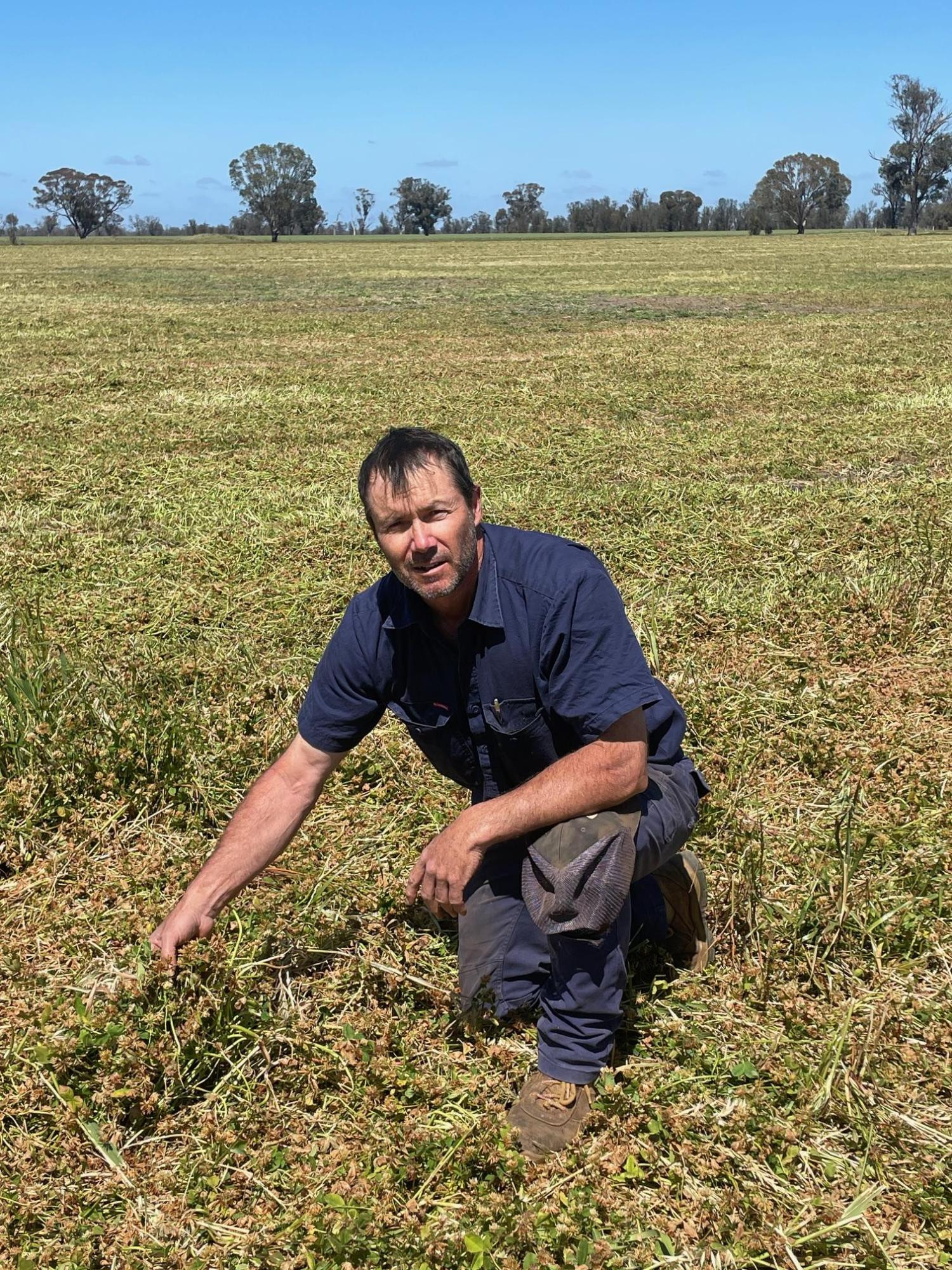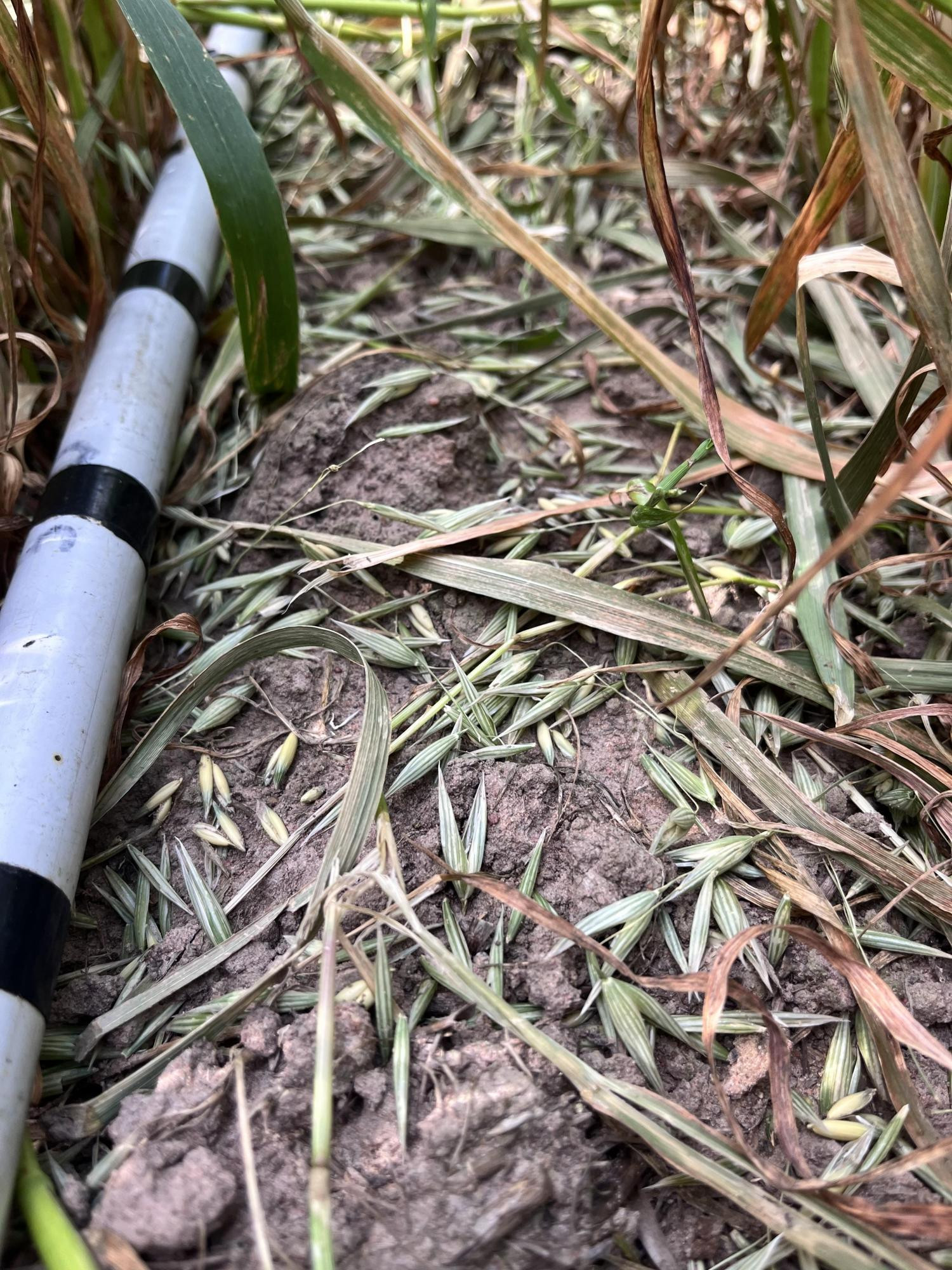Cropping & Soil
23 October, 2024
Narrow hail band results in $1 million crop damage in the north-west
Assessors add up the cost of last week's Wimmera hail storm.

A narrow band of hail, which hit the north-west late last week, has resulted in at least a $1 million dollars worth of damage in a small area of the region.
AgriBusiness Consulting Group assessor Marty Colbert, estimated the damage at more than $1 million, in a two kilometre wide strip over the 75 kilometres from Lake Toolondo to Murtoa.
"Then there are all the lost production costs - I can't say how many farm were affected, but it's easy to say losses might average $600/tonne across all crop types," Mr Colbert said.
"It rates from severe, as in 100pc losses, right back to 25pc - it's as bad as I have ever seen."
He said lentils and canola were the hardest hit, as they were at pod-fill and late flowering stage.

"The farmers will carry out hay salvage, for some of it, put the sheep on some of it, or try not to look at it," he said.
With oat seed smashed out of about 75pc of affected crops, farmers were also concerned about availability for next year's sowing season, he said.

The weather system, which brought the hail, also resulted in welcome rainfall, over much of the west of the state.
Crop grower Russell Heard, Wonwondah South, said the storm hit late on Wednesday.
"It was coming from the south-west to the north-east and it went to within eight kilometres of Donald," he said.
"It did vary in width from three to six kilometres wide, from what we could establish at our end.
"For us, really, it was an ice storm, not really a rain event."
He said he had not yet had a full estimate of the damage, with a full-farm assessment taking place on Friday.
"But I think it would be fair to say it's going to have a fair few zeroes attached to the end of it," he said.
He was caught in the middle of the storm, trying to shut machinery sheds and doors.
"It felt like I was being hit in the back with squash balls at full pelt - it really hurt," he said.
"We had ice 50mm across, I've never seen anything like that before."
Mr Heard said he estimated some of his canola would be "80-90 per cent written off, that's an educated guess on my behalf, as I'm a farmer, not an assessor.
"There are other areas, where there might be 40-50pc damage."
Mr Heard is growing canola, milling oats, milling wheat and Balansa clover for hay.
"We are having our whole farm assessed, there may be a few paddocks that have no damage, but I think there is going to be more damage than not - in some way or another."
He said the crops would still be harvested - "there will still be grain there to harvest, even the canola that's probably going to be heavily damaged will still have to be harvested, to process the stubble, to clean up the paddock.
"Our hay crops have been decimated by this hail, they were a day off cutting and we were just waiting for this potential rain front to disappear or go through - now we have lost a third of our Balansa completely and the other two thirds we are mowing it, one direction, to try and pick it up."
Mr Heard said he was fortunate the family's other farm, 20 km away at Lowan, had escaped any damage.
There had also been significant property damage, including broken skylights and windows, with water damage inside the house, as the hail on the roof melted and entered it.
Murtoa farmer John Delahunty, grows wheat, barley, lentils, canola and faba beans in a family run operation.
"There was enough damage to a small portion of our farm - it mostly impacted our barley, that looks like it's the most severe, just being a bit more brittle in its growth stage," Mr Delahunty said.
"We had some canola and lentils that look like they have a little bit of damage, but I'm unsure of how much as we have an assessor coming next week.
"It's not wiped out crops, we had a bit of hail damage in 2022, but this is hit enough of our paddock system in the line it ran across our property," he said.
"It's not whole paddocks that tend to get wiped out, it's portions of them - it was in such a narrow band and that's what we have seen."